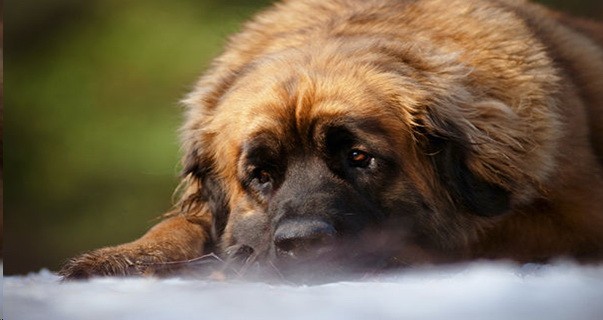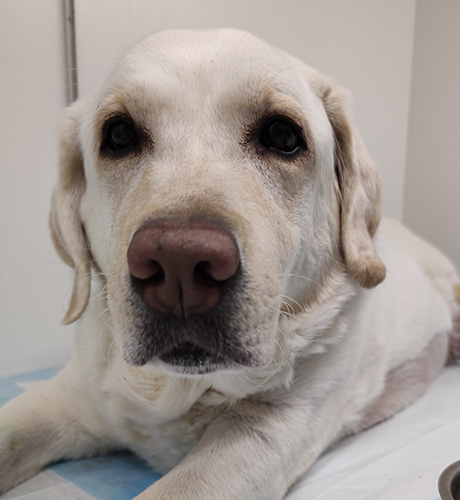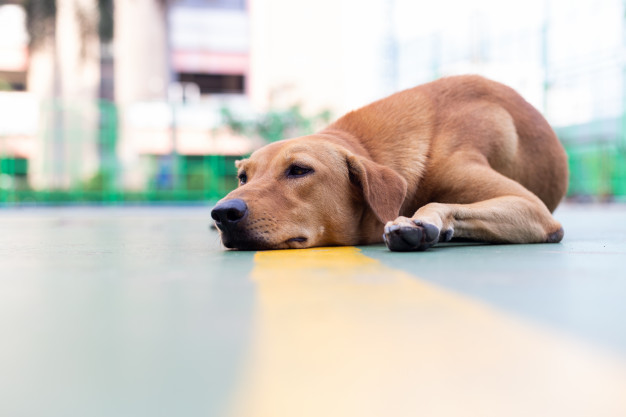A gastric torsion in a dog can lead to death within a few hours. Therefore, you should inform yourself well about the topic. In this article, we will explain how you first notice signs of gastric torsion and how an operation is carried out in an emergency.
An upset stomach in a dog can have serious consequences. For this reason, we will explain to you how you can prevent the disease and how your dog behaves in the event of an upset stomach. It is also important to be prepared for a possible treatment – because there are often high costs. But dog surgery insurance ensures that you are not left alone with all the costs and has many other services ready.
What is a gastric turn?

As the name suggests, a dog’s stomach rotates around the longitudinal axis during a stomach rotation, so that the entrance and exit of the stomach are pinched off. This means that the gases that are produced in the stomach cannot escape. As a result, the stomach gass up more is greatly stretched and hard. In addition, blood vessels are constricted by the twisting and there is an insufficient supply of oxygen to the stomach and other organs.
Some dog breeds are more prone to an upset stomach than others. Large breeds in particular, such as Great Danes, Irish and Gordon Setters, Weimaraners, Dobermans, St. Bernards, and Bassets, are prone to an upset stomach. This is because they have a deep chest compared to the waist circumference. This allows the stomach to move more in the abdominal cavity, which increases the risk of organ displacement.
Stomach torsion in dogs – how to prevent them

In order to prevent an upset stomach in the dog as much as possible, it is advisable to divide the daily feed ration into three smaller meals. You should also make sure that your dog does not eat too quickly. If he does that, there are special “anti-sling bowls” that prevent him from eating too quickly. After feeding you should make sure that your fur nose does not run and rage too fast. Excessive playing or rolling on the back should also be avoided after feeding.
Signs – This is how your dog behaves when the disease occurs

The signs that indicate an upset stomach in your darling vary in strength depending on the case. A bloated stomach that becomes hard and causes pain for the four-legged friend is typical of the disease. As the disease progresses, the abdomen can even increase like a drum and if you gently tap the abdominal wall, drum-like noises can be heard.
Most fur noses also become very restless, run back and forth a lot, alternate between lying, standing, and walking around – with a head that is often hanging low, a tummy drawn in, and/or a hunched back. Many dogs do not want to eat anything anymore and have a strong urge to gag – they try in vain to vomit or defecate. Some four-legged friends also produce an extremely large amount of saliva.
In the worst cases, the bloated stomach presses on the lungs and leads to shortness of breath, which is noticeable by severe panting. It can also lead to poor circulation, lethargy, or even shock in the dog.
In general, the faster you react and recognize the stomach upset, the better for your dog!
Treatment of gastric torsion – surgery, costs, and insurance

If you bring your four-legged friend to your veterinarian or to the nearest veterinary clinic, he will first be examined there and probably X-rayed. An X-ray can confirm the diagnosis and distinguish it from gastric overload.
During the subsequent treatment, the dog’s circulation is first stabilized. He then receives an IV and the vet degasses the abdominal wall. During the operation, the doctor opens the abdomen of the four-legged friend and puts the stomach back in the correct position. If parts of the stomach or the spleen are too badly damaged, they are removed during the operation. In addition, the stomach is rinsed out several times in order to empty it completely. To prevent the stomach from turning again, the veterinarian then sews the stomach to the abdominal wall.
Of course, an operation of this size is also associated with high costs. On average, treatment costs of around $1,200 can be expected. It is therefore advisable to take out dog surgery insurance so that you do not have to bear the costs alone. Many insurance companies will step in if the dog needs surgery for gastric torsion and cover those costs.





























